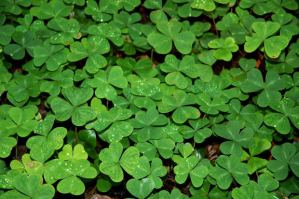 According to the Old Farmer’s Almanac, spring, or the Vernal Equinox arrives on March 20 at 6:45pm EDT. The Vernal Equinox is the day when “day and night are each approximately 12 hours long (with the actual time of equal day and night, in the Northern Hemisphere, occurring a few days before the vernal equinox). The Sun crosses the celestial equator going northward; it rises exactly due east and sets exactly due west.” (http://www.almanac.com/content/first-day-seasons).
According to the Old Farmer’s Almanac, spring, or the Vernal Equinox arrives on March 20 at 6:45pm EDT. The Vernal Equinox is the day when “day and night are each approximately 12 hours long (with the actual time of equal day and night, in the Northern Hemisphere, occurring a few days before the vernal equinox). The Sun crosses the celestial equator going northward; it rises exactly due east and sets exactly due west.” (http://www.almanac.com/content/first-day-seasons).
We are not so sure about the parenthetical bit about the actual time of equal day and night. True, the days are getting longer. And we are enjoying the increased daylight – maybe more this Spring than historically – but here in the Northeast (our T-shirt company has two primary locations: one in Vermont and one in Massachusetts) we are in a bit of limbo. Some call is Stick Season. Some call it Mud Season. Both names are quite accurate.
And so Stuck in the Mud, as it were, we are very keen for signs of spring. For us, spring isn’t just another season; it’s a chance to begin again. Here are a few signs that came to mind:
- Seeds for sale in local stores
- Daylight Savings Time
- The beginning of Maple Sugaring season
- The return of the red-winged black birds
- Ice out (this is when the ice on frozen lakes and rivers gives way)
- Snow drops, crocuses, daffodils
- The smell of damp earth
- Temperatures above freezing
- Nesting birds
- The beginning of baseball season
- Trout season

 “The next morning is a free-for-all carnival of colours, where everyone plays, chases and colours each other with dry powder and coloured water, with some carrying water guns and coloured water-filled balloons for their water fight. Anyone and everyone is fair game, friend or stranger, rich or poor, man or woman, children and elders. The frolic and fight with colours occurs in the open streets, open parks, outside temples and buildings. Groups carry drums and musical instruments, go from place to place, sing and dance.”
“The next morning is a free-for-all carnival of colours, where everyone plays, chases and colours each other with dry powder and coloured water, with some carrying water guns and coloured water-filled balloons for their water fight. Anyone and everyone is fair game, friend or stranger, rich or poor, man or woman, children and elders. The frolic and fight with colours occurs in the open streets, open parks, outside temples and buildings. Groups carry drums and musical instruments, go from place to place, sing and dance.”
 Common signs of Spring in this part of the country include crocuses, the smell of skunk, the appearance of robins and bluebirds, and honey bees getting back to work. In Vermont, our home state, ice-out is a major sign of the new season, as is the start of maple season when sap starts flowing in the trees. In Massachusetts, our second home, seeing ducks in the park chasing one another with amorous intentions is a sure sign that warmth is on the way. We also start to see cafés move some of their seating outdoors – a very civilized sign of Spring.
Common signs of Spring in this part of the country include crocuses, the smell of skunk, the appearance of robins and bluebirds, and honey bees getting back to work. In Vermont, our home state, ice-out is a major sign of the new season, as is the start of maple season when sap starts flowing in the trees. In Massachusetts, our second home, seeing ducks in the park chasing one another with amorous intentions is a sure sign that warmth is on the way. We also start to see cafés move some of their seating outdoors – a very civilized sign of Spring.





